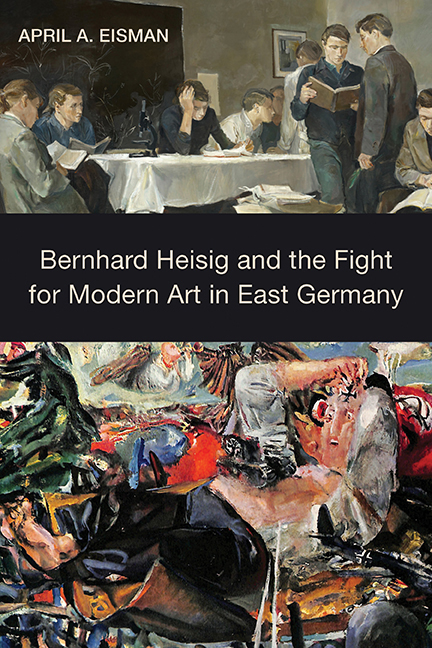Book contents
- Frontmatter
- Contents
- List of Illustrations
- Acknowledgments
- List of Abbreviations
- Introduction: Why Heisig Matters
- 1 From the Nazi Past to the Cold War Present
- 2 Art for an Educated Nation
- 3 Against the Wall: Murals, Modern Art, and Controversy
- 4 The Contentious Emergence of the “Leipzig School”
- 5 Portraying Workers and Revolutionaries
- Conclusion: The Quintessential German Artist
- Notes
- Bibliography
- Index
1 - From the Nazi Past to the Cold War Present
Published online by Cambridge University Press: 14 June 2019
- Frontmatter
- Contents
- List of Illustrations
- Acknowledgments
- List of Abbreviations
- Introduction: Why Heisig Matters
- 1 From the Nazi Past to the Cold War Present
- 2 Art for an Educated Nation
- 3 Against the Wall: Murals, Modern Art, and Controversy
- 4 The Contentious Emergence of the “Leipzig School”
- 5 Portraying Workers and Revolutionaries
- Conclusion: The Quintessential German Artist
- Notes
- Bibliography
- Index
Summary
Bernhard Heisig enrolled at the Leipzig Academy in October 1949, the same month that the German Democratic Republic was founded. At twenty-four, he was starting over after having been a soldier for the Nazis, a prisoner of war under the Soviets, and a refugee in eastern Europe. Over the course of the next twelve years, he would become increasingly engaged with the cultural politics of his new country, ultimately becoming director of the Leipzig Academy, a prestigious position within the East German art world. These years also saw a number of important political events—the failed Workers’ Uprising in 1953, the New Course of the mid-1950s, and de-Stalinization—all of which deeply affected the visual arts.
This chapter focuses on the first thirty-six years of Bernhard Heisig's life, with an emphasis on those spent in East(ern) Germany until just after the Berlin Wall was built. By looking closely at Heisig's life and art within the broader contexts of Leipzig and East Germany in these years, this chapter shows the artist's active engagement with the cultural politics of the day, first as a student, then as a teacher, writer, cultural administrator, graphic artist, and, finally, director of the Leipzig Academy. This chapter also shows that the GDR was not a monolithically repressive system but rather one that changed over time and according to place. Indeed, and as will become increasingly evident in subsequent chapters, artistic policy in East Germany changed in large part because of artistic interventions by actively engaged artists like Heisig, albeit often after significant and vehement debate. Additionally, this chapter shows that Heisig was not always a modern artist but, rather, in the 1950s, created realist works that were inspired by nineteenth-century artists like Adolph Menzel (1815–1905).
From Breslau to Leipzig, 1925–48
Bernhard Heisig was born on March 31, 1925, in Breslau, Germany (now Wrocław, Poland). An only child, he grew up with art as part of his everyday life because his father, Walter Heisig, was a painter. In speaking about his childhood, Heisig recalled that, although he knew how to draw before he could read or write, “I didn't make what people call children's drawings.
- Type
- Chapter
- Information
- Publisher: Boydell & BrewerPrint publication year: 2018



